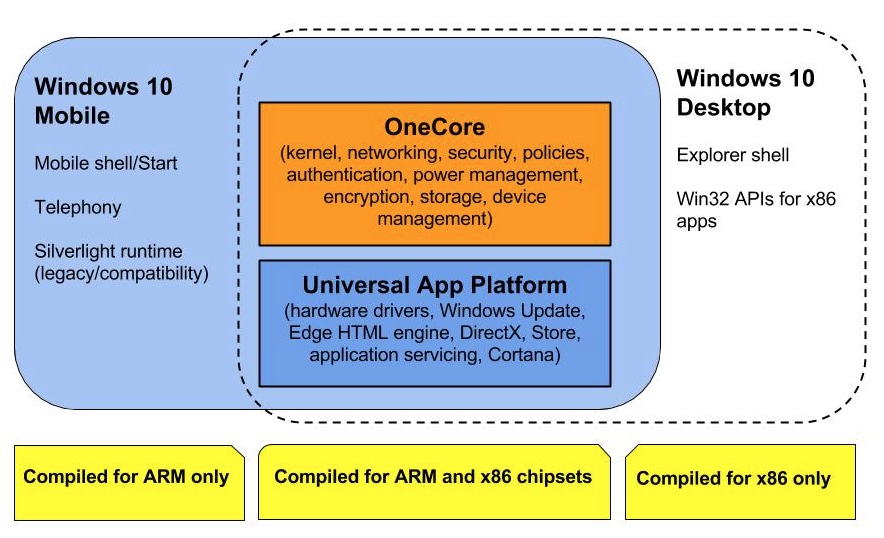Here's my chart again, showing the current situation for Windows 10 Mobile Anniversary Update:

Note the two 'shells' on either side of the chart. Now heres the WC quote:
According to my sources, Microsoft is building an "adaptive shell" into Windows 10 that'll work across PCs and tablets, phones, HoloLens, and even Xbox...
Over the next few Windows 10 releases however, Microsoft will be bringing each of these device categories under one Windows Shell, making for a true universal Windows 10 experience no matter what device you're using. Internally referred to as "Composable Shell" or "CSHELL", this new Windows Shell will be able to scale in real-time between all types of devices, similarly to how Continuum currently works between desktop mode and tablet mode, only this time it'll scale across Xbox and Mobile as well.
For our more techy readers, the Composable Shell is essentially a shell modularized into sub-components. The system can transition between each component if it is required, making for a much more flexible experience on devices like 2-in-1's or something that has multiple form-factors.
We're told that the Composable Shell will begin showing up over the next few major Windows 10 updates, for Mobile, then Desktop, and eventually Xbox too. In fact, Microsoft has already given us a glimpse of this Composable Shell in a demo a few months back detailing improvements upcoming to Continuum on Windows 10 Mobile. In the demo, Microsoft showed off a Continuum environment on phone that was extremely similar to the environment we know and love on actual Windows 10 PCs today. This is essentially the Composable Shell in its infancy.
That demo showed us that Microsoft is enhancing Continuum to go both ways. Windows 10 Mobile can expand into a full desktop environment, and eventually, Windows 10 desktop will be able to do the opposite or scale further for devices like HoloLens and Xbox.
A perfect example of this Composable Shell is with the rumored Surface phone and Windows 10 on ARM. We all want Microsoft to release a phone running full Windows 10 on ARM, but as it currently stands that would be impossible — full Windows 10 doesn't have a UI that adapts well to screen sizes of less than 6 inches. With this Composable Shell, that wouldn't be an issue because full Windows 10 would be able to switch into "phone-mode", providing an experience one would expect on a Windows 10 Mobile device, except powered by full Windows 10.
Read more in the full piece.
